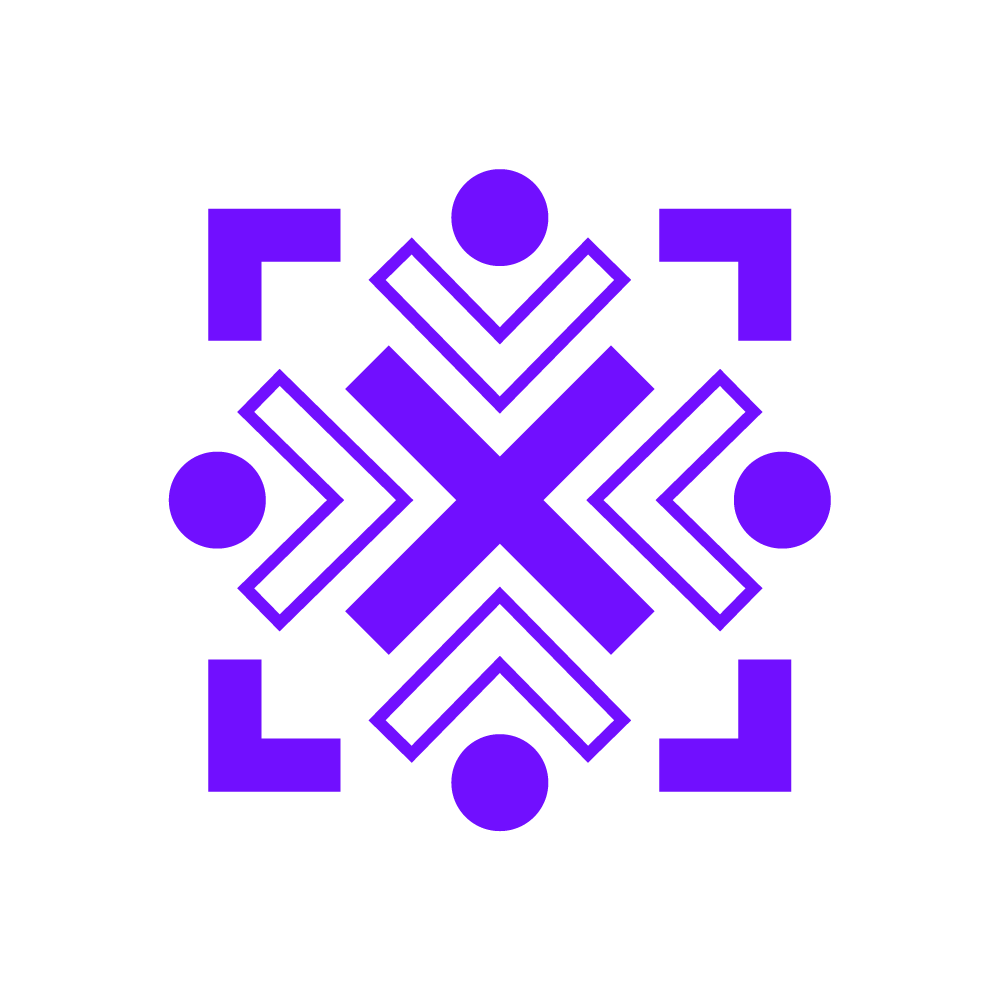Ever feel like work never stops, even when you’re at home? With remote jobs and AI tools blurring the lines between office and personal time, finding equilibrium is tougher than ever. Yet, studies like Work in America reveal that many still find job satisfaction despite these challenges.
Balance isn’t about perfection—it’s a sustainable rhythm. Self-awareness and regular check-ins help adjust priorities before stress takes over. The right strategies turn chaos into harmony.
Ready to reclaim control? Discover 12 actionable ways to create harmony between career and personal life. Small changes lead to big results.
Key Takeaways
- Remote work and technology make separating work and personal time difficult.
- Job satisfaction remains high despite modern challenges.
- Balance is about consistency, not daily perfection.
- Self-assessment prevents burnout before it starts.
- Practical adjustments create long-term stability.
Why Work-Life Balance Matters More Than Ever
The digital age has erased traditional boundaries between professional and personal spaces. With laptops and smartphones, the office follows us everywhere. Gallup data shows 85% of remote workers value flexibility, yet only 33% consistently achieve it.
When work invades home life
Hybrid setups eliminate commutes—the natural buffer between job and personal time. Without this transition, work hours stretch into evenings. OECD reports reveal 13% of Australians log 50+ hours weekly, a trend mirrored globally.
The hidden costs of imbalance
Burnout creeps in silently: exhaustion, dread, and fading creativity. Chronic stress harms physical health, causing headaches and sleep disturbances. Conversely, balance boosts long-term productivity. Presenteeism—working while unproductive—costs businesses billions yearly.
Recognizing these risks is step one. Next? Designing routines that protect both output and well-being.
12 Expert Tips for Maintaining a Healthy Work-Life Balance
Finding equilibrium between career and personal life requires intentional effort. The right approach depends on your schedule, responsibilities, and preferences. Below are 12 adaptable methods to help you reclaim control.

These strategies work for office, remote, and hybrid setups. Start by testing 3-5 that resonate most. Balance isn’t static—it shifts as priorities change.
Set clear goals for personal time. Whether it’s family dinners or hobbies, treat these moments like non-negotiable appointments. A healthy work-life rhythm reduces stress and boosts productivity.
Plan your day around energy peaks. Tackle demanding tasks when you’re most alert. Save routine work for lower-energy periods. Small tweaks create lasting improvements.
Regularly reassess what’s working. Adjust strategies as your workload or personal needs evolve. Achieving work-life balance starts with self-awareness and flexibility.
1. Plan Ahead to Prioritize Personal Time
Your calendar holds the secret to balancing deadlines with downtime. A Harvard Business Review study found that 70% of employees work during vacations—proof that unplanned free time vanishes. Treating personal activities with the same rigor as work tasks creates lasting boundaries.
Start by auditing your week for hidden pockets of time. That 15-minute gap between meetings? Perfect for a mindfulness exercise. The early morning before emails pile up? Ideal for creative activities. Small adjustments compound into significant rewards.
Digital calendars aren’t just for work obligations. When you schedule joy with the same precision as tasks, you train colleagues—and yourself—to respect those commitments. This shift transforms abstract “me time” into protected moments.
Schedule joy like work meetings
Block “fun appointments” visibly in shared calendars. Walk-and-talk meetings let you discuss projects while refreshing your mind outdoors. One marketing director swears by her non-negotiable Wednesday lunch yoga—colleagues now plan around it.
Small adjustments for big rewards
Micro-scheduling works wonders. Try three 15-minute personal intervals daily: morning meditation, afternoon stretching, evening reading. These micro-moments prevent burnout better than occasional long breaks. Your brain gets regular resets without disrupting workflow.
The key? Consistency over intensity. Protecting thirty minutes daily for activities you love does more for balance than sporadic half-day escapes. Your calendar becomes a tool for equilibrium, not just efficiency.
2. Embrace the Way Your Brain Works
Productivity isn’t about grinding harder; it’s about aligning tasks with your cognitive strengths. Neuroscience shows our brains cycle through focus phases—fighting this rhythm leads to burnout. Work smarter by designing your schedule around natural mental patterns.
Try the Pomodoro Technique
Break work into 25-minute sprints with 5-minute breaks. This method combats fatigue by matching the brain’s attention span. Studies show frequent pauses boost retention by up to 20%.
Dr. Farvah Fatima recommends breaks every 1–2 hours to reset focus. Use tools like Toggl Track to audit how you spend time. You might discover hidden inefficiencies.
Minimize distractions for deep focus
Turn off notifications during critical tasks. Apps like Freedom block social media during work blocks. A Stanford study found multitasking drops IQ by 10 points—equivalent to missing a night’s sleep.
Set time blocks for different tasks
Group similar activities together. Reserve mornings for creative work when mental clarity peaks. Save administrative tasks for lower-energy afternoons.
Align blocks with energy levels
Track your daily energy fluctuations for a week. Notice when you tackle complex problems best. One writer swears by Tuesday mornings for deep work—her team knows not to schedule meetings then.
Pro tip: Label time blocks as “admin,” “creative,” or “collaborative.” Match high-energy periods to demanding tasks. Your schedule becomes a roadmap for sustainable output.
4. Commit to a Hard Stop Each Day
Setting a firm endpoint to your workday isn’t just a habit—it’s a necessity in today’s always-on culture. Slack’s research shows 52% of employees work after hours due to unspoken pressure, not choice. Without a clear cutoff, tasks bleed into personal time, eroding boundaries and fueling burnout.
How to reinforce boundaries
Visual cues train your brain to switch modes. Try a desktop shutdown ritual: close tabs, tidy your workspace, and play a specific “end-of-day” song. One lawyer cut her 10-hour work hours to 8 by timeboxing tasks and announcing her departure time to colleagues.
Buffer zones help too. A 15-minute post-work walk mimics a commute, signaling the day’s transition. Even remote workers benefit from out-of-office signage—a closed door or a “Do Not Disturb” Slack status.
The danger of “work creep”
Parkinson’s Law proves tasks expand to fill available time. Open-ended schedules invite inefficiency. A job with no finish line breeds stress, while defined limits boost focus.
Balance work and life by treating your end time as non-negotiable. Like a gym closing hour, your cutoff protects personal space. Small, consistent actions—not grand gestures—build sustainable boundaries.
5. Use Technology to Unplug
Technology should serve your well-being, not chain you to work 24/7. The same tools that boost productivity can also safeguard personal time—if used intentionally. Start by auditing your apps and devices to reinforce balance.
Apps to block distractions
Leverage technology to silence digital noise. Freedom blocks websites across devices, while Cold Turkey locks distractions for set periods. Forest gamifies focus—plant virtual trees by avoiding your phone.

For mindfulness, try Smiling Mind or This Way Up. These apps offer guided sessions to decompress during breaks. Even 5 minutes daily reduces stress, per healthdirect research.
Designate work-free devices
Separate tools for work and leisure. Use a Chromebook for emails and an iPad for reading or hobbies. Grayscale mode on phones dulls addictive app colors, making off-hours scrolling less tempting.
A Microsoft study found 15 minutes of daily device separation lowers stress by 27%. Small tweaks—like charging your work laptop outside the bedroom—create clear work-personal boundaries.
6. Take Regular Breaks
Your brain isn’t wired for nonstop focus—science proves strategic pauses boost performance. Ergotron research shows 20-second microbreaks improve concentration by 13%. These brief resets sustain productivity without sacrificing output quality.
The science of micro-breaks
Follow the 20-20-20 rule: every 20 minutes, look 20 feet away for 20 seconds to reduce eye strain. Alternate sitting and standing every 30-60 minutes to maintain energy levels and circulation. These small habits prevent the physical health risks of prolonged sitting.
Create a “break menu” with varied activities:
– Stretch for 2 minutes to relieve muscle tension
– Doodle or journal to engage creative pathways
– Walk outside to reset mental clarity
Lunch breaks as reset tools
Adopt Japan’s “hirune” culture—a 20-minute post-lunch nap. Companies like Google provide nap pods because rested employees solve problems faster. Pair this with a “palate reset” playlist: instrumental jazz or nature sounds to transition mindsets.
These techniques turn breaks into performance enhancers. Consistent pauses protect both health and output, proving rest isn’t lazy—it’s strategic.
7. Take Real Time Off
EY’s radical 3-week vacation policy exposed a hidden truth: forced disconnection boosts long-term performance. Yet Gallup found only 27% of hybrid workers consistently take time to recharge. The “zombie emailing” phenomenon—mindlessly checking messages during leave—drains 41% of intended relaxation, per Harvard research.

Prepping your team for your absence
Start two weeks early. Create delegation documents with clear owner assignments. Draft auto-responders specifying your return date and emergency contacts. One tech manager reduced her team’s panic calls by 80% by recording Loom video walkthroughs of pending projects.
The power of re-entry buffers
Schedule a light first work day post-vacation. Block 2–3 hours for email triage, not decision-making. EY’s mandatory leave policy led to 23% higher post-vacation productivity—proof that days off aren’t lost time, but strategic recovery.
Pro tip: Treat out-of-office notices as force fields. List an alternate contact and write, “I’ll delete unread emails received during my leave.” This trains colleagues to respect boundaries.
8. Practice Mindfulness to Prevent Burnout
Mental fatigue often creeps in silently, making mindfulness a game-changer. Small daily habits rewire your brain to handle stress before it escalates. A McKinsey study found 30% fewer burnout cases among employees who practiced mindfulness consistently.
Breathwork and Meditation
The 4-7-8 breathing technique works like a reset button: inhale for 4 seconds, hold for 7, exhale for 8. This method lowers cortisol levels and sharpens focus. Tools like the Muse headband provide real-time biofeedback, turning meditation into a science.
Recognizing Early Warning Signs
Your body signals burnout before your mind catches up. Watch for jaw tension, midday energy crashes, or irritability. Beyond Blue (1300 22 4636) offers support when stress feels overwhelming.
Schedule a daily 10-minute mindfulness break. Even brief pauses protect your health and productivity long-term. The key? Consistency—not perfection.
9. Cultivate Passion Projects Outside Work
Wood shavings on your desk might seem messy, but MensLine Australia links hands-on hobbies to 31% higher productivity. Non-work interests aren’t distractions—they’re cognitive cross-training that fuels creativity in your professional life.
Hobbies as energy boosters
The “analog renaissance” proves screen fatigue is real. Activities like woodworking or ceramics engage different brain networks than digital tasks. Patagonia formalized this with their 2% Policy—employees surf or climb during work hours to spark fresh ideas.

Skill-stacking turns leisure into career assets. A marketer podcasting about vintage cars builds storytelling chops. A developer’s chess habit sharpens strategic thinking. These activities create mental playgrounds where breakthroughs happen.
The link between play and productivity
Lego Serious Play methodology shows how hands-on activities unlock insights. Companies like Google use it for strategic planning—proof that play isn’t childish, but cognitively vital.
Your weekend hobbies recharge Monday’s problem-solving. Whether gardening or guitar, offline interests restore the focus that work drains. As MensLine’s research confirms: a rich personal life fuels professional excellence.
10. Reassess Your Work’s Alignment with Your Values
A paycheck alone no longer defines career satisfaction—today’s professionals crave deeper meaning in their work. With 44% of Gen Z prioritizing values over salary, aligning your job with personal goals is key to long-term fulfillment.
When to consider a lateral move
The Japanese Ikigai framework helps identify overlaps between what you love, what the world needs, and what you can be paid for. If your current role only checks one box, explore internal mobility programs like Unilever’s. Their employees stay 43% longer when transitioning to value-aligned teams.
Finding purpose in your role
Start with a transferable skills audit using tools like MySkillsFuture or O*NET. These reveal hidden strengths that could reshape your job scope. One marketing analyst discovered her passion for data visualization by auditing her interests—she now leads dashboard design.
For discussions with managers, try this script:
“I’ve identified [skill/interest] as a strength. How might we incorporate this into upcoming projects to achieve both team goals and my growth?” This frames alignment as a work-personal win-win.
11. Communicate Openly with Your Manager
Managers often don’t realize their teams are drowning in unseen workloads. Slack’s Workforce Index found 37% of overtime stems from unspoken pressure, not urgency. Transparent dialogue about capacity prevents burnout and builds trust.
Decoding productivity myths
“Productivity theater”—like late-night emails to appear busy—masks real output. Teach managers to measure workload capacity with BI tools. Asana’s “no meeting Wednesdays” policy proves focused work beats performative hours.
Strategies for setting expectations
Use data to quantify demands: “My current projects require 45 hours weekly; my capacity is 38.” Frame it as a management win—realistic goals boost team morale and quality.
Email template for workload negotiation:
“Hi [Manager], I’ve analyzed my tasks and want to align on priorities. [List projects] require [X hours]. Can we adjust timelines or delegate to ensure sustainable output?”
Strong relationships thrive on honesty. Regular check-ins turn silent stress into actionable support, creating a culture where work aligns with human limits.
12. Seek Professional Guidance
Professional guidance bridges the gap between struggle and strategy. BetterUp research shows coaching delivers 22% higher productivity—proof that external support creates measurable change. When self-help isn’t enough, experts provide tailored frameworks.
Matching help to your needs
ICF-certified coaches focus on goal achievement through structured sessions. Therapists address deeper emotional patterns causing stress. Mentors offer industry-specific advice. Google’s Search Inside Yourself program blends neuroscience with emotional intelligence training.
Small steps with big impact
Start with 5-minute habit stacks:
– Stretch after video calls
– Breathe deeply before checking emails
– Journal wins every Friday
HSA/FSA-eligible apps like Talkspace make therapy accessible. Lyra Health connects users with licensed providers. These tools integrate support into busy schedules.
Professional help isn’t admitting defeat—it’s optimizing your approach. The right guidance creates sustainable balance, turning knowledge into daily practice. Investing in yourself pays lifelong dividends.
Conclusion: Building Sustainable Balance
True equilibrium isn’t a finish line—it’s a continuous adjustment. Gallup reveals structured flexibility boosts retention by 43%, proving work-life balance thrives when treated as fluid, not fixed.
Conduct quarterly audits. Use tools like Balance or YearCompass to track progress. Small tweaks—like protecting lunch breaks or unplugging post-work—compound into lasting change.
Commit to one strategy for 21 days. Whether scheduling downtime or realigning goals, consistency turns intention into habit. Your life deserves the same planning as your career.
FAQ
How can I separate work from personal life when working remotely?
Create physical boundaries like a dedicated workspace and set strict working hours. Use apps like Freedom or Cold Turkey to block work notifications after hours.
What’s the fastest way to reduce stress during a busy workday?
Try the Pomodoro Technique—25 minutes of focused work followed by a 5-minute break. Short walks or deep breathing exercises also help reset your mind.
How do I stop feeling guilty about taking time off?
Remind yourself that rest boosts productivity. Prepare colleagues in advance by delegating tasks and setting auto-responders. Studies show employees return more creative after breaks.
What are signs I’m heading toward burnout?
Chronic fatigue, irritability, and reduced performance are red flags. Track your energy levels weekly—if you’re consistently drained, it’s time to reassess priorities.
Can hobbies really improve my job performance?
Yes. Activities like painting or hiking activate different brain networks. Microsoft research shows employees with creative hobbies solve work problems 19% faster.
How do I talk to my boss about unrealistic workloads?
Use data—track your tasks and time spent. Propose solutions like adjusting deadlines or redistributing tasks. Frame it as optimizing team productivity.
What’s the most overlooked work-life balance strategy?
A> Single-tasking. Multitasking reduces efficiency by 40%. Schedule deep work blocks and group similar tasks to minimize context-switching.



